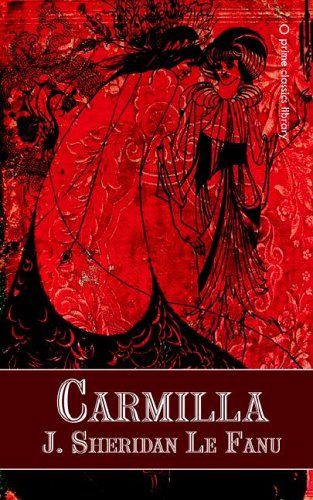 One of the books you’ve read even if you haven’t, because it’s influenced everything. A story about a vampire written before Dracula, Carmilla is set in a castle in Austria, right next door to Hungary, where the word vampire originates in the form of vampir. Hungary also furnished us with a person who was close to a real life vampire: Erzebet Bathory, who legends said bathed in the blood of virgins. Bathory had no immortality, but she nonetheless partook in the vampire contract: great power can be yours, but first you must be willing to feed on blood.
One of the books you’ve read even if you haven’t, because it’s influenced everything. A story about a vampire written before Dracula, Carmilla is set in a castle in Austria, right next door to Hungary, where the word vampire originates in the form of vampir. Hungary also furnished us with a person who was close to a real life vampire: Erzebet Bathory, who legends said bathed in the blood of virgins. Bathory had no immortality, but she nonetheless partook in the vampire contract: great power can be yours, but first you must be willing to feed on blood.
But these ideas are far away from Carmilla, which is whimsical, even a bit romantic in places. Le Fanu’s gothic horror is comforting and cossetting, full of soft corners and velvet edges. Laura, daughter of an English serviceman, strikes strikes up a friendship with an odd girl called Carmilla, who seemingly never ages, and becomes filled with rage when she hears a Christian hymn.
The romantic elements are between two female characters, and although Le Fanu writes for a 19th century audience, he obviously means to imply a sexual relationship. I’m reminded of how Hollywood’s Golden Age took place during the Hays censorship code, and it led to a lot of subtle and clever movies – with directors having to suggest or hint at things rather than say them out loud.
Modern readers will probably find Carmilla to be a bit dated. The conflict and resolution is speedily handled, propelled along by a few chance meetings that could be called very convenient for the plot. When the dust settles, it seems like it was all over much too easily.
Even worse, Carmilla is curiously shallow and unevocative. A vampire story needs an atmosphere. It needs to evoke the chilliness of the Alpine range, or the loneliness of the Carpathian forests, or the stately derelict of a crumbling castle. Carmilla is a “who? whom?” kind of story, driven almost entirely by character interactions, and it lacks the strong anchor of a convincing environment. The world Carmilla evokes is as thin as the paper it’s printed on.
Carmilla is a good example of a 19th century gothic story, but it’s probably more interesting for what it inspired than what it is. Soaring mountain peaks sit atop tons of necessary but unspectacular rock and gravel, and it’s often the same with books. Carmilla wasn’t state of the art even when it came out – The Monk by Matthew Lewis was written 75 years earlier, and is far stronger in most respects.
Le Fanu will probably never escape Carmilla’s shadow, although he published many other short stories and novellas. It’s probably best remembered as a literary version of Blade Runner: a fairly average film that changed everything.
No Comments »
Comments are moderated and may take up to 24 hours to appear.
No comments yet.
